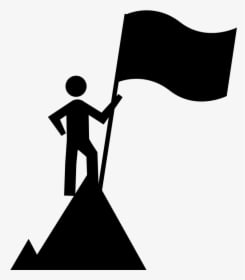Strategic Cost Reduction: Optimizing Operations for Profitability
In today's fiercely competitive business environment, the ability to reduce costs without sacrificing efficiency is paramount for sustainable growth and long-term success. Strategic cost reduction isn't merely about cutting expenses; it's a proactive approach to optimizing operations, maximizing resource utilization, and ultimately boosting profitability. This article explores comprehensive strategies and practical techniques to achieve significant cost savings while maintaining quality and customer satisfaction.
1. Comprehensive Cost Analysis: Laying the Foundation
Before implementing any cost-reduction initiative, a thorough understanding of your organization's current financial landscape is critical. A meticulous cost analysis, encompassing all expenses, provides a clear picture of your spending habits. This detailed overview pinpoints areas ripe for optimization and allows for data-driven decision-making.
2. Eliminating Non-Value-Added Activities: Streamlining for Efficiency
Non-value-added activities are processes or tasks that don't directly contribute to customer value. Identifying and eliminating these inefficiencies is crucial for boosting productivity and reducing unnecessary costs. For instance, a manufacturing company might discover redundant quality control steps that can be streamlined without impacting product quality.
3. Leveraging Technology: Automation and Optimization
Technology plays a transformative role in modern cost reduction strategies. Automation, for example, eliminates manual tasks, minimizes errors, and significantly enhances productivity. Investing in appropriate technological solutions delivers substantial long-term cost savings and improved operational efficiency.
4. Supply Chain Optimization: Maximizing Procurement Value
The supply chain presents numerous opportunities for cost reduction. Collaborating closely with suppliers, negotiating favorable contracts, and implementing just-in-time inventory management techniques minimize procurement costs and reduce inventory holding expenses. Strategic partnerships and optimized logistics can significantly impact the bottom line.
5. Implementing Lean Principles: Waste Reduction and Efficiency Gains
Lean principles, rooted in the Toyota Production System, focus on minimizing waste and maximizing efficiency throughout the entire operational process. By identifying and eliminating forms of waste like excess inventory, overproduction, and unnecessary movement, businesses can realize substantial cost savings and improved operational flow.
6. Empowering Employees: Harnessing the Power of Collective Intelligence
Employees possess invaluable insights into operational processes and potential cost-saving opportunities. Fostering a culture of continuous improvement and encouraging employee participation in decision-making unlocks their expertise and generates innovative cost-reduction ideas. Incentivizing participation further strengthens this collaborative approach.
7. Centralization and Standardization: Achieving Operational Synergy
Standardizing processes across departments and locations enhances efficiency and reduces costs. Streamlined workflows, elimination of redundancies, and adoption of best practices minimize errors, reduce training expenses, and boost overall productivity. Consistent procedures create a more predictable and cost-effective operational environment.
8. Strategic Outsourcing: Focusing on Core Competencies
Outsourcing non-core activities can be particularly beneficial for smaller businesses. Partnering with specialized service providers provides access to expertise, reduces overhead, and allows businesses to concentrate on their core competencies. This strategic allocation of resources enhances efficiency and reduces costs associated with maintaining internal departments.
9. Preventative Maintenance: Proactive Cost Avoidance
Neglecting preventative maintenance leads to costly breakdowns and repairs. A proactive maintenance strategy prevents unexpected downtime, extends the lifespan of equipment, and significantly reduces repair expenses. Regular maintenance schedules minimize disruptions and extend the useful life of assets.
10. Negotiating Favorable Contracts: Leveraging Buying Power
Developing strong supplier relationships and negotiating favorable contracts yields substantial cost savings. Leveraging your buying power and exploring alternative suppliers secures better pricing, volume discounts, and improved payment terms, optimizing procurement costs.
11. Energy Consumption Analysis: Reducing Environmental Impact and Costs
Energy costs can represent a significant expense. Analyzing energy consumption patterns, implementing energy-efficient practices, and investing in renewable energy sources reduces your environmental footprint and lowers energy bills. Sustainable practices contribute to both cost reduction and environmental responsibility.
12. Optimizing Employee Scheduling: Aligning Labor Costs with Demand
Effective employee scheduling aligns labor costs with customer demand. Analyzing historical data, forecasting future demand, and employing scheduling software prevents overstaffing during slow periods and minimizes overtime costs during peak periods. Data-driven scheduling optimizes labor costs.
13. Robust Cost Control Systems: Monitoring and Corrective Action
A robust cost control system is vital for ongoing cost reduction. Regular monitoring, budgeting, and variance analysis identify cost overruns and allow for timely corrective action. A proactive monitoring system ensures that cost-saving measures are effective and adjustments are made as needed.
14. Cultivating a Culture of Cost Consciousness: Shared Responsibility for Savings
Integrating cost reduction into the organizational culture is crucial for long-term success. Incentivizing cost-saving initiatives, recognizing employee contributions, and fostering open communication about cost-saving ideas creates a shared sense of responsibility. A culture of cost consciousness ensures that cost reduction is a continuous and collaborative effort.
15. Continuous Evaluation and Adaptation: Embracing Change and Innovation
Cost reduction is a dynamic process requiring continuous evaluation and adaptation. As your business evolves, new opportunities for cost savings may emerge. Remaining vigilant, embracing change, and consistently seeking optimization strategies maintain a competitive edge and ensure long-term success.
In conclusion, strategic cost reduction is a transformative tool for streamlining operations and enhancing profitability. By implementing the strategies outlined above – from comprehensive cost analysis to cultivating a culture of cost consciousness – businesses can achieve significant cost savings without compromising quality or customer satisfaction. The key lies in proactive planning, continuous monitoring, and a commitment to ongoing optimization.






